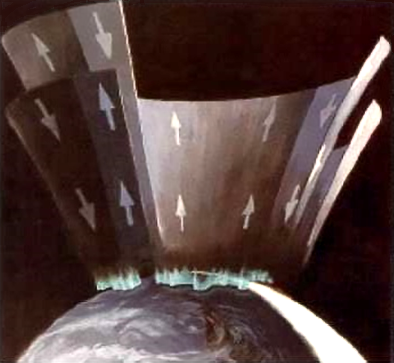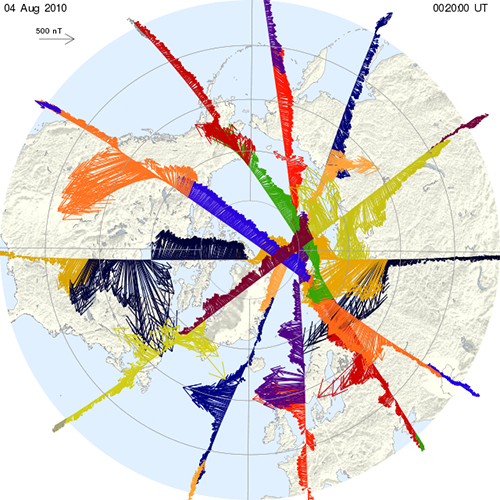Source: Space Weather

High in Earth’s atmosphere, electrical currents called Birkeland currents flow along the planet’s magnetic field lines, connecting the magnetosphere to the ionosphere and powering the aurora. These currents often exceed 10 million amperes during geomagnetic storms and are crucial to scientists’ understanding of extreme electromagnetic events, which can disrupt satellite operations, radio communications, GPS navigation, and even the electric power grid.
However, it can be difficult to reliably simulate the magnetosphere-ionosphere (M-I) system because of the many complex factors that feed into its behavior. Because of this modeling challenge, space weather scientists have taken part in a concerted effort, led by the National Science Foundation’s Geospace Environment Modeling program, to compare and evaluate the available models with the physical data.
Most of that work has used data from magnetometers at ground level because they are easily available and can be helpful for evaluating the effects of space weather on the ground. In a new study, Anderson et al. use observations from the Active Magnetosphere and Planetary Electrodynamics Response Experiment (AMPERE) to compare how well four different models match real Birkeland currents during two storm events. AMPERE uses magnetic field data from the Iridium Communications constellation of 66 satellites in 780-kilometer-altitude orbits to measure the Birkeland currents. Conveniently, these currents are one of the basic physical quantities calculated in modern physical simulations of Earth’s interaction with the solar wind, so comparison between these observations and models is easy.

To get an accurate picture of how well the models matched the actual Birkeland currents, the authors used data on how the total current and the spatial distribution of the current density changed over time. They found that all of the models gave the general behavior of the total current, but the quantitative results for the current strength varied considerably between models. When it came to the current density distribution, the models did not fare so well. In some cases, they even predicted the opposite of what actually occurred.
Each model has its own strengths and weaknesses, but they all had trouble accurately predicting the latitude spread in currents, pattern variations in current density, and many of the currents on the nightside of the planet. This outcome suggests that the models were good at reproducing the directly driven aspects of the currents but did not account for more complex processes like the ring current and substorm dynamics.
In the end, no one model clearly stood out to the researchers as better than the rest. The results highlight the need to acquire observations continuously to track space weather as it happens. As new generations of simulations are developed, tests against observations will always be needed to know when our predictions of space weather impacts are reliable. (Space Weather, https://doi.org/10.1002/2016SW001529, 2017)
—Leah Crane, Freelance Writer
Citation:
Crane, L. (2017), Testing models of near-space electrical currents, Eos, 98, https://doi.org/10.1029/2017EO077833. Published on 18 July 2017.
Text © 2017. The authors. CC BY-NC-ND 3.0
Except where otherwise noted, images are subject to copyright. Any reuse without express permission from the copyright owner is prohibited.
